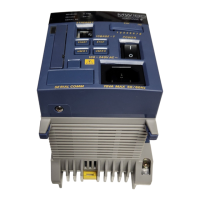1-15
IM MW100-01E
Explanation of Functions
1
Alarms
The main module compares the measured values against preset alarm values and
outputs alarm signals based on the result from the digital output module. The following
four types of alarms can be output.
Type Notation Actions
Upper limit alarm H Generates an alarm when the measured value
exceeds the alarm value.
Lower limit alarm L Generates an alarm when the measured value falls
below the alarm value.
Differential upper limit alarm DH Generates an alarm when the difference between
(during differential computation) the measured values of two alarms exceeds the alarm
value.
Differential lower limit alarm DL Generates an alarm when the difference between
(during differential computation) the measured values of two alarms falls below the alarm
value.
High limit on rate-of-change RH Generates and alarm when the rate of change in
alarm rising measured values exceeds the alarm value.
Low limit on rate-of-change RL Generates and alarm when the rate of change in
alarm falling measured values falls below the alarm xvalue.
Delay high limit alarm tH Generates an alarm when the measured value
remains below the alarm value for the specified time
(delay time).
Delay low limit alarm tL Generates an alarm when the measured value
remains above the alarm value for the specified time
(delay time).
Alarm Value Hysteresis
You can set a width (hysteresis) to the values used to activate and release alarms. Alarm
hysteresis can prevent frequent activation and release of alarms when the measured
value is unstable around the alarm value.
Alarm
setting
Alarm release
Measured vale
Alarm activated
Upper limit alarm
Lower limit alarm
Measured value
Alarm release
Hysteresis
Alarm setting
Alarm activated
Alarm Output Timing
The output interval is 100 ms. Therefore, when the measurement interval is 10 ms or 50
ms, the alarm output data is accumulated over 100-ms intervals and output at 100-ms
intervals based on the accumulated data.
Delay High Limit Alarm and Delay Low Limit Alarm
An alarm occurs when the measured value remains below or above the alarm value for
the specified time (delay time). You can set the delay time between 1 and 3600 s for
each channel. Set the delay to an integer multiple of the measurement or MATH interval.
Delay time
Alarm
setting
Alarm release
Delay time
Measured value
Alarm activated
Delay high limit alarm
Delay low limit alarm
Measured
value
Alarm cleared
Alarm release
Alarm activated
1.3 Functions of the Main Module

